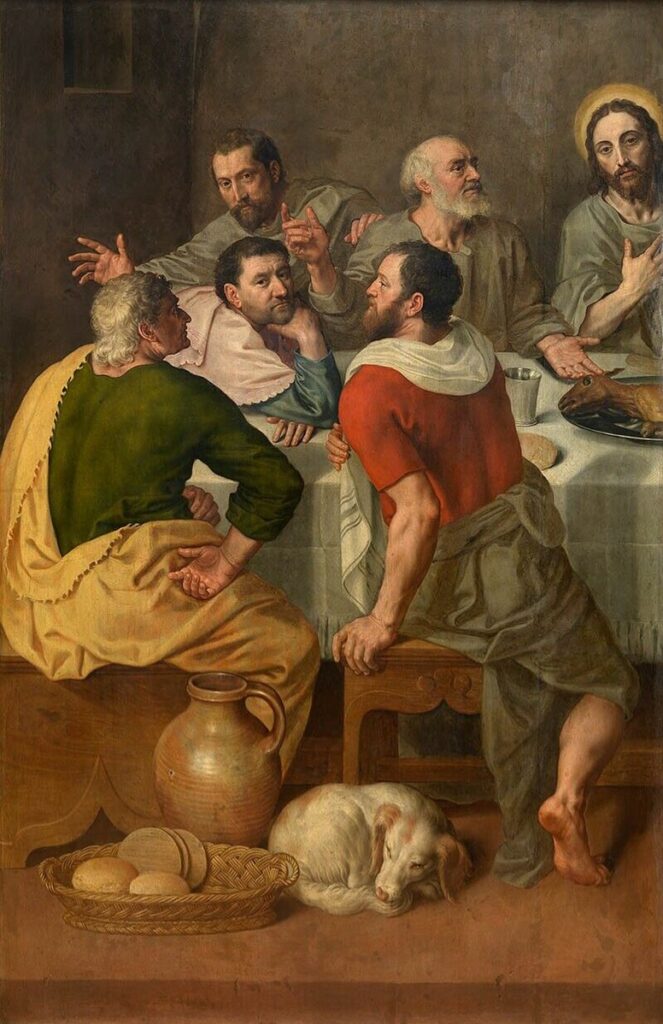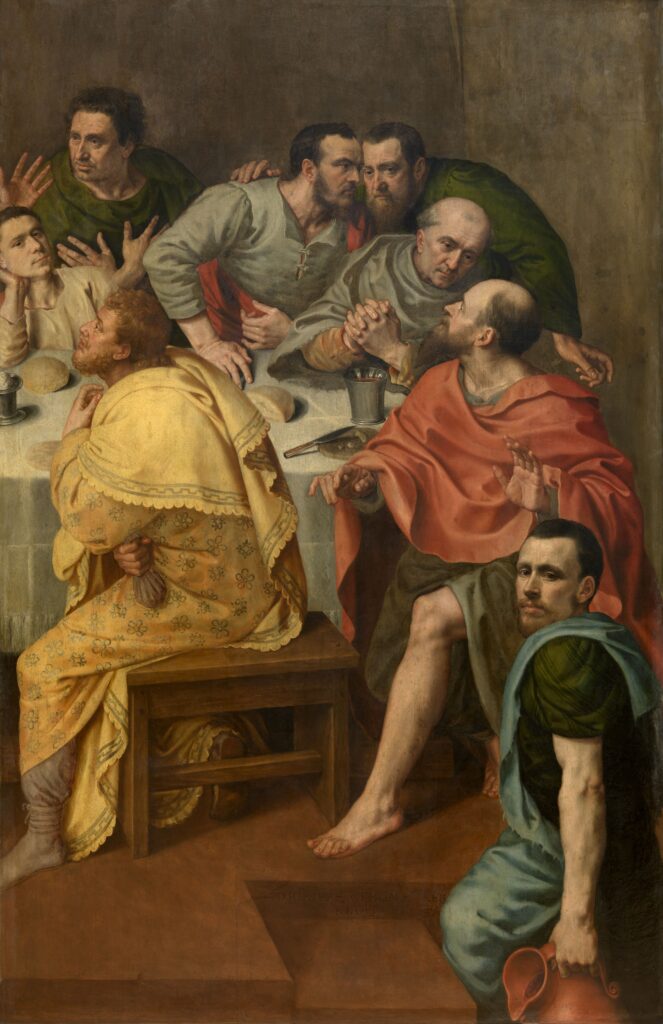The War and Art Project
Highlighting the Cultural Effects of Iconoclasm
CASE STUDY 3:

Figure 4
Michael Coxie, Central Panel of the Triptych of the Holy Sacrament, 1567, Oil on Panel, Collection Koninklijke Musea voor Schone Kunsten van Belgié, Burssels

Figure 5
Adriaen Thomasz Key, Left Exterior Wing of The Last Supper, Oil on Panel, Koninklijk Museum voor Schone Kunsten, Antwerp

Figure 6
Adriaen Thomasz Key, Right Exterior Wing of The Last Supper, 1575, Oil on Panel, Koninklijk Museum voor Schone Kunsten, Antwerp
The images above show examples of how art was modified after the Beeldenstorm. The destructive nature of iconoclasm that destroyed sacred objects related to the Eucharist, including the loss of the expertise that went into their original crafting, caused adjustments within the art community to fit into new restrictions to avoid object destruction.
After the Beeldenstorm, because Protestants and Catholics still had to co-exist in the northern provinces and the southern Spanish Netherlands, artists were required to modify their works if they were to continue practicing. A new ecumenical approach would be used to avoid this fate.
We see an example of this when comparing Michiel Coxcie’s Last Supper, 1567, (Figure 1b) to Adriaen Thomasz Key’s Last Supper, 1575, (Figure 1c and d). Koenraad Jonckheere writes that “Instead of an arrogant glorification of Catholic wealth as is the case with Coxcie, [Keys] Last Supper is a Spartan mimesis of the biblical story set in sober surroundings.”[1] Key stripped his work of “apocryphal decorum.”[2] Coxcie, on the other hand, took the risk of leaving some gold and silver objects (right side), rendering this work as a rare example of the type dated just a year after the Beeldenstorm.[3]
However, Coxcie’s example includes elements of classical architecture portraying a humanist element, which reveals a definite shift from just using Catholic iconography. In other words, although he does depict decorative vessels in contrast to Keys’ Last Supper, his use of classical architecture is a modification of commissioned art in the Catholic Church after the Beeldenstorm. Both works reveal modifications: one of a drastic nature; the other more subtle.
[1] Jonckheere, Antwerp Art After Iconoclasm…, 255.
[2] Jonckheere, Antwerp Art After Iconoclasm…, 248.
[3] Jonckheere, Antwerp Art After Iconoclasm…, 240.
War and Art Project
University of South Alabama
Mobile, Alabama
© Tiffany Beasley 2022
Contact: ArtShire Substack
